

In this post, I offer information about vowels and answer the question, “What is a diphthong?”. I offer tips for how to teach this phonics skill and provide a FREE variant vowel and diphthong word list. Finally, I leave you with activities and resources you can use to teach your students diphthongs.
The Science of Reading tells us that for a student to become a successful reader, they need explicit and systematic phonics instruction and meaningful practice. To support your phonics instruction, I created a blog series that explains how to teach the different phonics skills. In earlier posts, I explained how to teach cvc words, blends and digraphs, and long vowels, and r-controlled vowels.
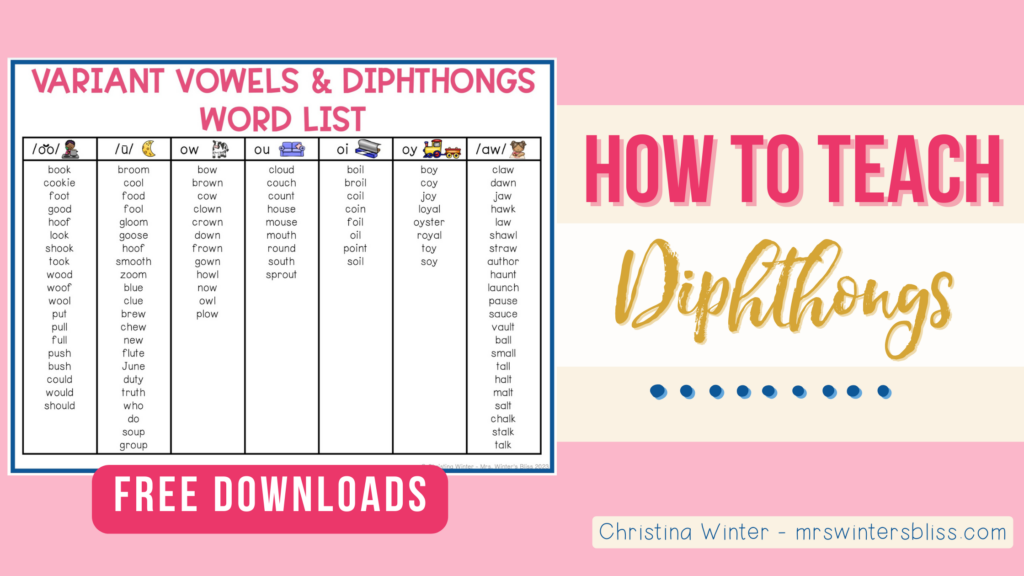
Today I am excited to help you better understand diphthongs. I explain what they are and offer tips for how and when to teach this important phonics skill. You’ll find a FREE diphthong and variant vowel word list and suggested activities and resources you can use to teach diphthongs in your classroom.
Information about Vowels
Of the 44 English phonemes, 19 are vowels. Wondering how this can be? While we only have five, sometimes 6 vowel letters in English, those letters can combine to make 19 different vowel sounds. Five of these sounds are long vowel sounds, and 7 of them are short vowel sounds. So what about the remaining 7 vowel sounds? These are what we call variant vowels. They are vowel sounds that can be spelled using a variety of different graphemes (or letters).
For example, consider the /aw/ sound. There are a variety of ways to make it including “aw” as in claw, “au” as in cause, “al” as in talk. These combinations are considered variant vowels.
What is a Diphthong?
A diphthong (pronounced diff-thong) is a unique kind of vowel sound. It occurs when the vowel makes a new sound in conjunction with another vowel. Vowels are letters that produce a single sound, but diphthongs make two vowel sounds in a single syllable. It is also known as a gliding vowel because it starts as one vowel sound and glides to another vowel sound.
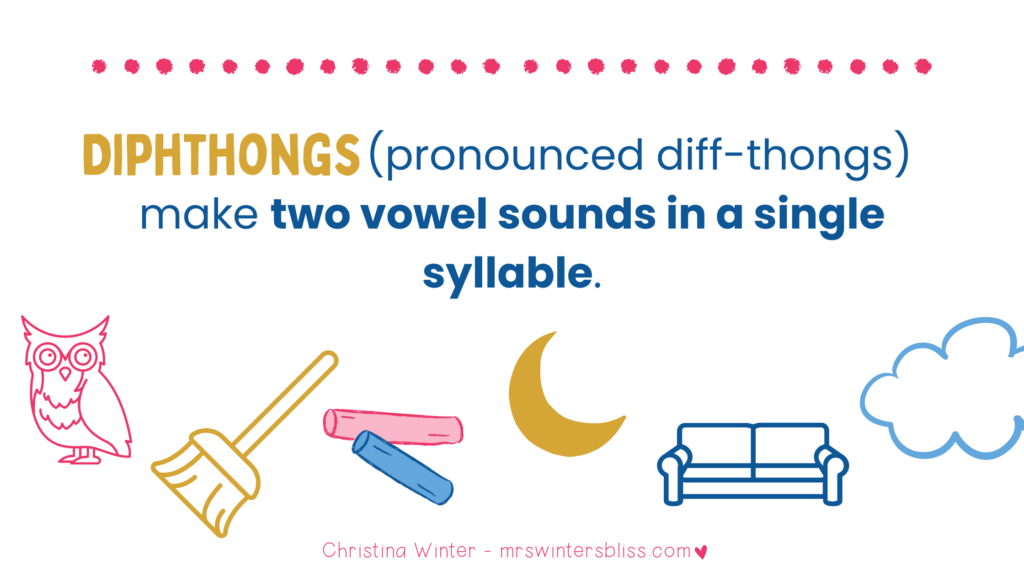
A sound wall is a helpful tool for teaching students about diphthongs and other phonics skills. One important component of a sound wall is the mouth articulation cards. These cards are photographs that show students exactly what shape their mouths make when they make a sound. The cards clearly show students that there are two mouth movements when they make the sound of a diphthong. Below you see the two movements our mouth makes when we make /oi/.
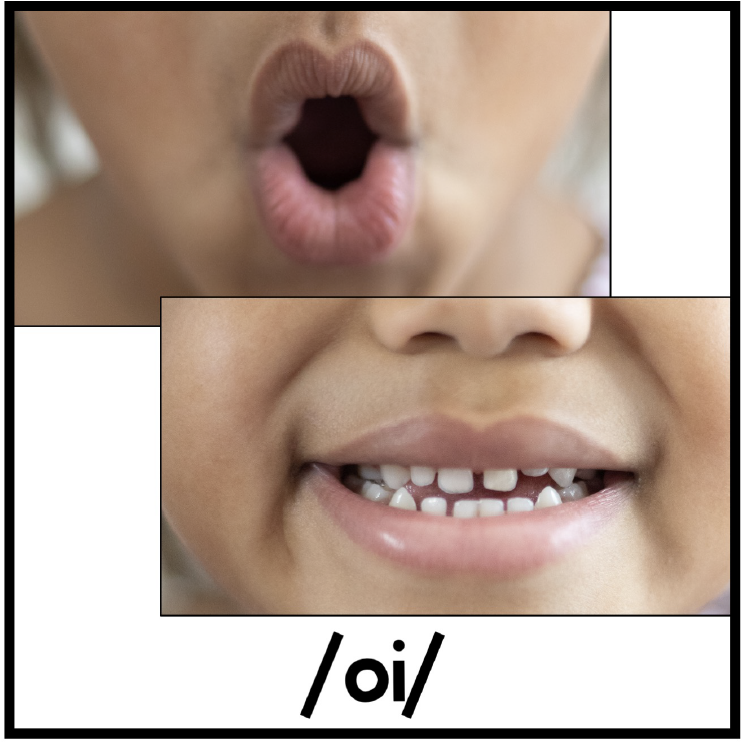
You can find diphthongs at the beginning of a word as you hear in the word out. They can come in the middle in words like coin, or they can come at the end of words e you hear in enjoy.
The two most common diphthongs are the letter combination oy/oi, as in boy or coin, and ow/ou, as in cloud or cow.
Variant Vowels vs. Diphthongs
While variant vowels and diphthongs are closely related, they are not the same thing. Variant vowels are the groups of letters that produce the sound of vowels. A diphthong is when the vowel makes a NEW sound in conjunction with another vowel.
Also, be careful not to confuse diphthongs with digraphs. Digraphs are two letters that represent one speech sound. Examples of digraphs include sh, ch, th, ph.
When Should You Teach Diphthongs and Variant Vowels?
Variant Vowels and diphthongs are usually first introduced towards the end of first grade after children have received instruction and practice with long vowels. I recommend starting with variant vowel vowels for short and long u, and then moving on to digraphs -ow/-ou and -oi/oy. Instruction continues into 2nd grade and 3rd grade where you will review and teach the others.
Resources and Activities to Teach Diphthongs
As with all phonics skills, for students to master diphthongs they time and lots of opportunities for application and practice. Fortunately, many engaging, low-prep, SoR-aligned activities offer this meaningful practice. Let’s take a closer look at a few of my favorites…
These Science of Reading-aligned, printable, and digital phonics and spelling activities give students the practice they need to master diphthong vowels.
After you have explicitly taught the skill, these activities can be used as review in a center, independent work, or sent home for extra practice. This resource includes 54 student printables and 42 interactive digital slides all focused on diphthongs.
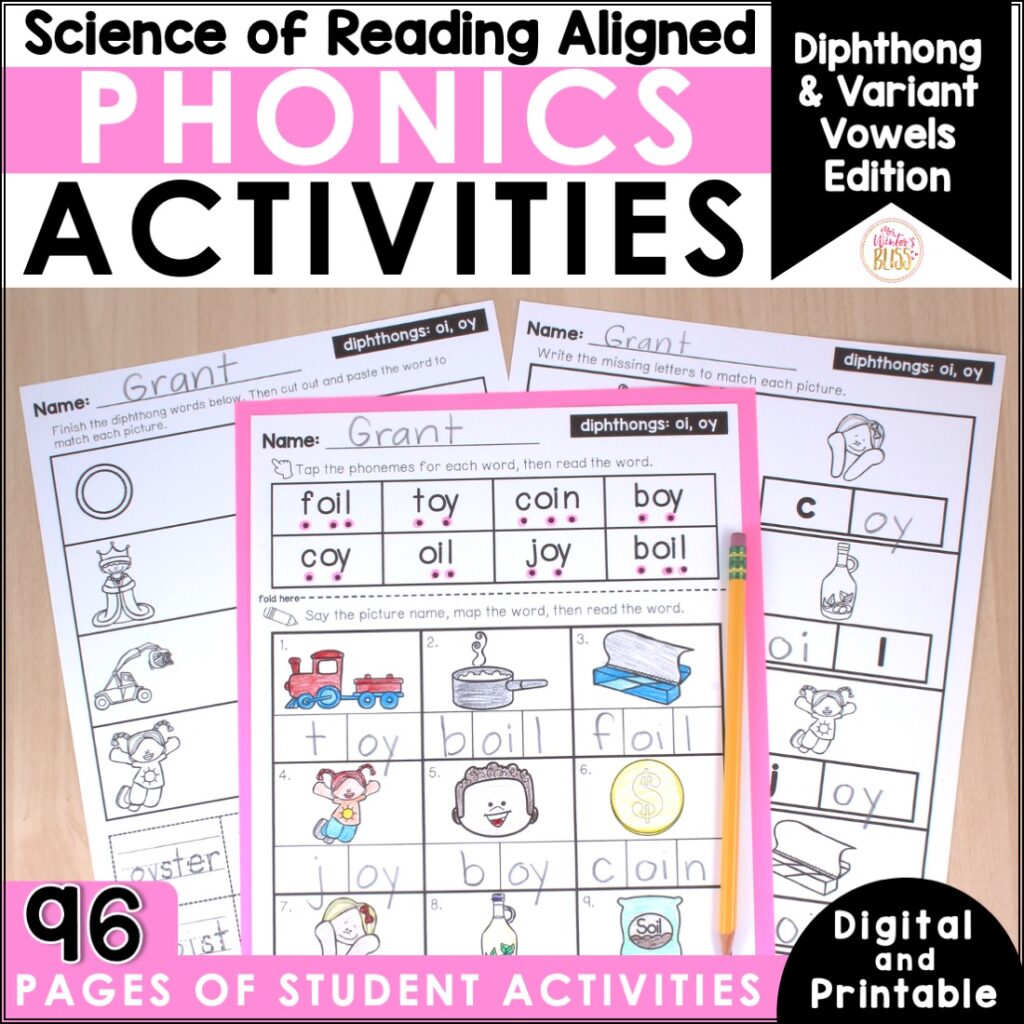
I love these phonics activities because they are NO PREP for you! Simply print out the pages and assign them to students as needed. Additionally, they include tasks on varying levels so you can easily differentiate based on the needs of your students.
A decodable text is a text you use in beginning reading instruction. It is a story that is controlled based on the phonics skills you have taught. Once students have received explicit instruction with diphthongs, use these decodable passages to let them begin reading those words!
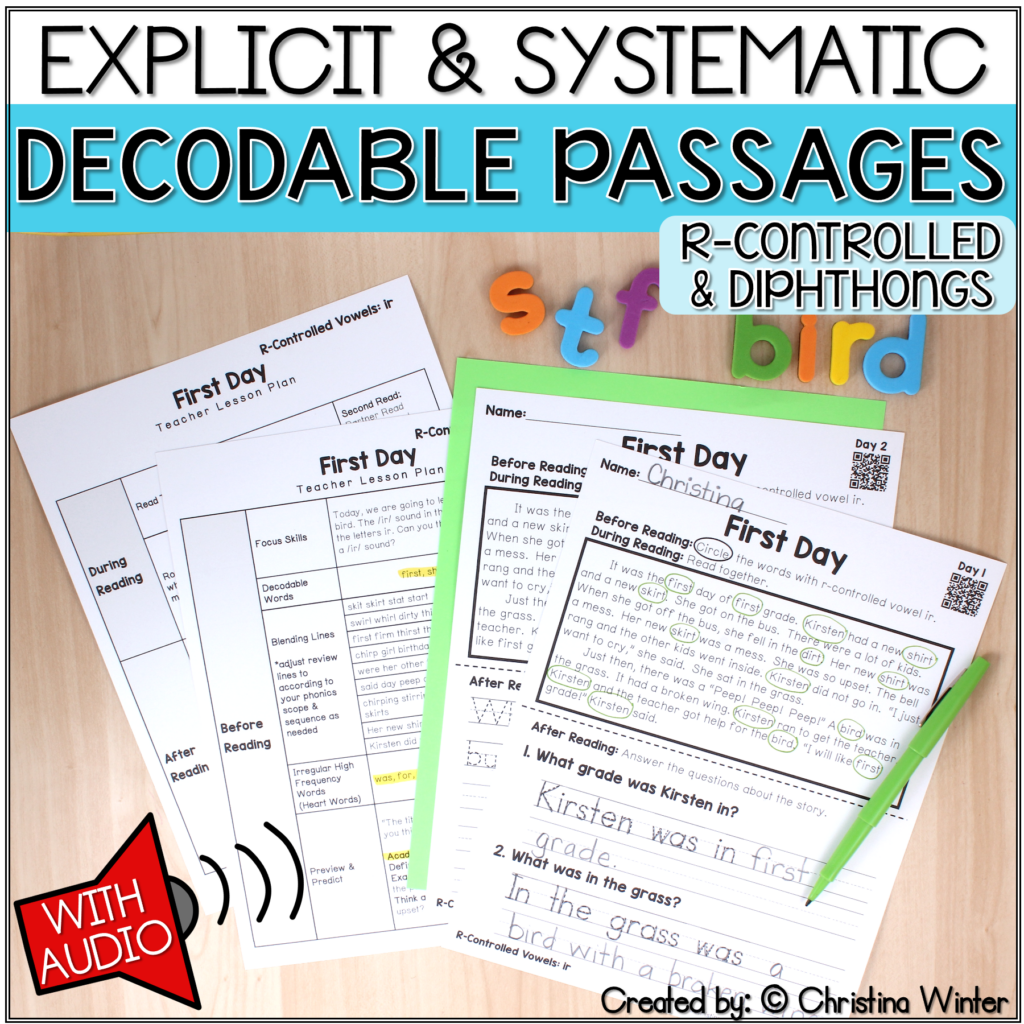
Decodable texts give students practice applying the skills that you have taught to real reading experiences. This application is how skills stick! These Science of Reading-aligned decodable passages with comprehension questions and explicit teacher lesson plans are the perfect resource to give students practice reading texts with the skills you have taught.
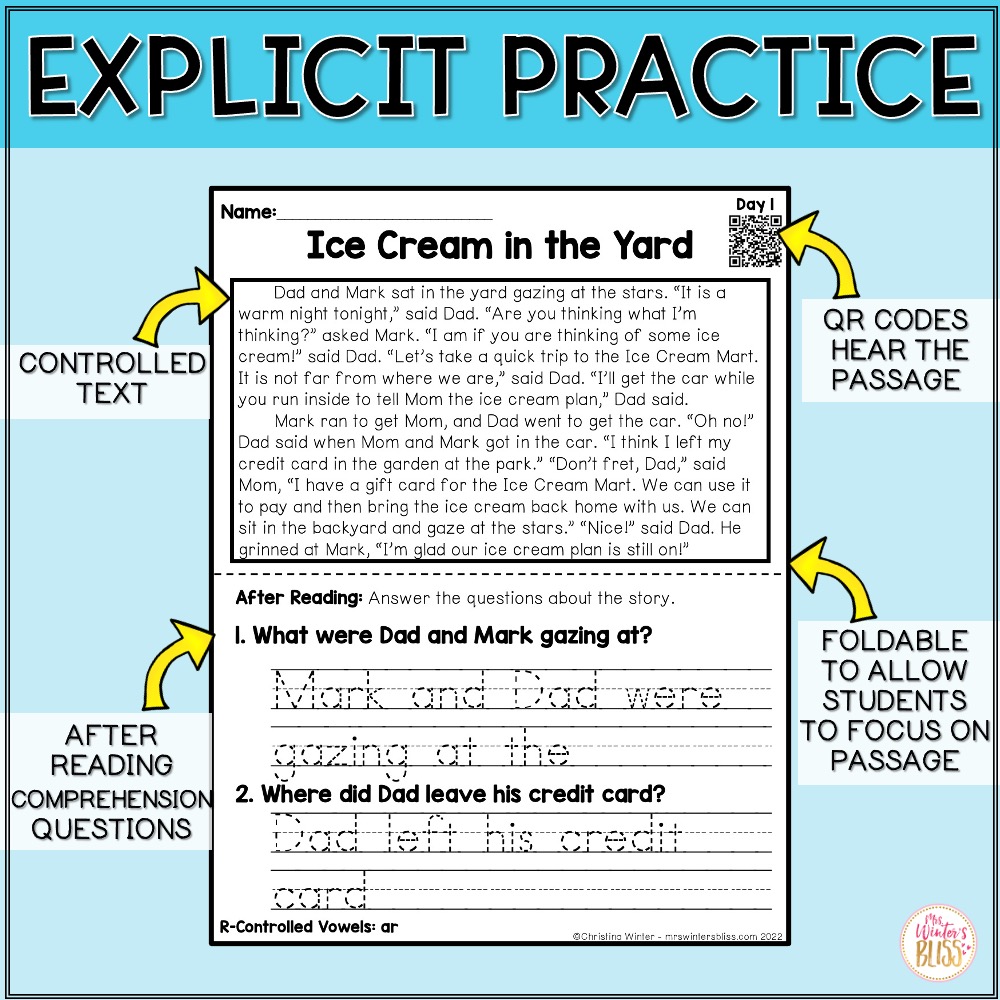
This resource contains 17 decodable passages with comprehension questions and is perfect for beginning readers. Each passage is a phonics-based controlled text that contains r-controlled vowel and diphthong words, previously taught words, and irregular high-frequency words. You’ll also get lesson plans for each book with activities to use before, during, and after reading, as well as student printables and audio recordings of each book!
3. Word Mapping
Word mapping activities are a physical way to represent the relationship between the phonemes (sounds) and graphemes (letters). They allow students to physically connect or match the letters with the sounds they represent and help promote the process of orthographic mapping. Ultimately word mapping activities build word recognition and decoding skills that improve fluency in both reading and writing.
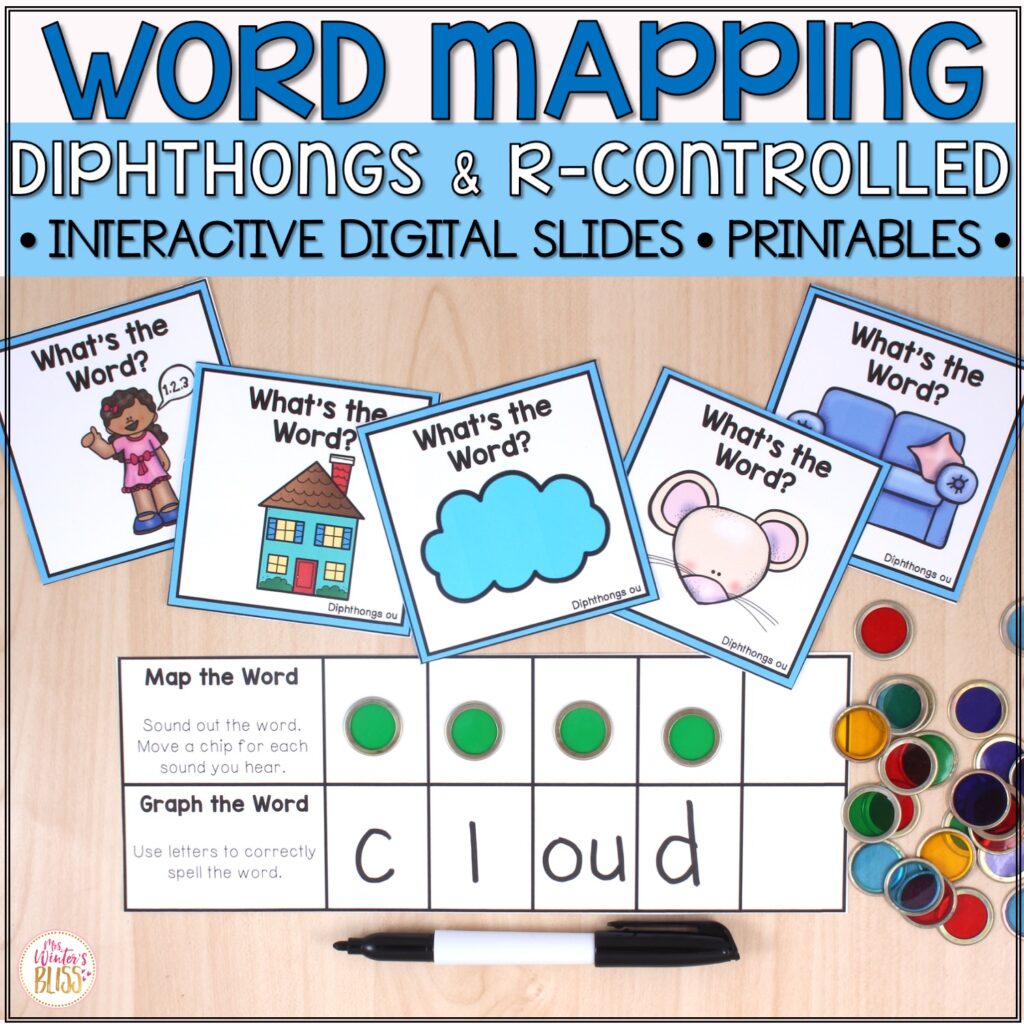
Using my word mapping resource, students connect the speech sounds (phonemes) of a word to the letters or letter combinations (graphemes). This resource includes over 85 r-controlled and diphthong words and is perfect for centers, independent, and guided practice!
4. FREE Phonics Skills Word Lists
Finally, to help get you started teaching diphthongs, I am happy to offer you FREE phonics skills word lists! These lists serve as excellent teacher references and can be used in many ways: whole group instruction as you introduce and practice new phonics patterns, small group work, fluency reading, and much more.
In one download you’ll get word lists for CVC words, Blends, Digraphs, Long vowels, R-Controlled vowels, Diphthongs, and Multisyllabic words!
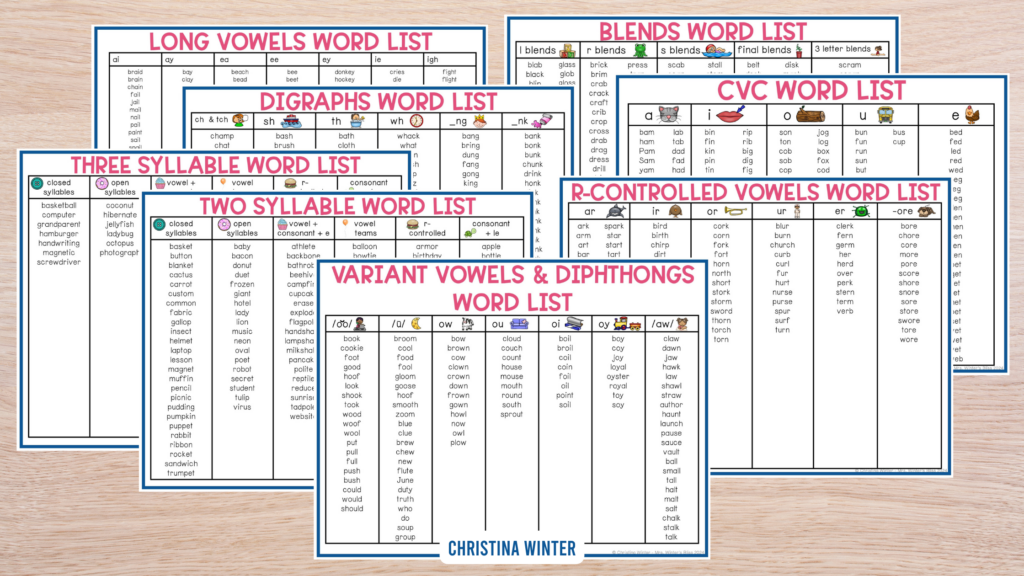
Drop your email below to instantly receive these FREE Phonics Skills Word Lists!
I hope the information and resources I have shared here today will help to bring more effective phonics instructions and practice into your classroom. Be on the lookout for my final post in this series where I’ll dive into how to teach multi-syllabic words!
-shop this post-
-
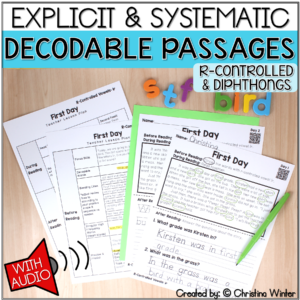 Decodable Passages with Comprehension Questions – R Controlled & DiphthongEarn 0 Reward Points
Decodable Passages with Comprehension Questions – R Controlled & DiphthongEarn 0 Reward Points
$10.75Rated 5.00 out of 5 based on 12 customer ratings -
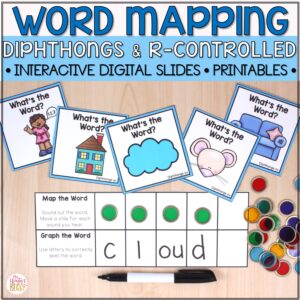 Word Mapping – Connecting Phonemes to Graphemes – Diphthong and R ControlledEarn 0 Reward Points
Word Mapping – Connecting Phonemes to Graphemes – Diphthong and R ControlledEarn 0 Reward Points
$4.00Rated 5.00 out of 5 based on 10 customer ratings -
 Phonics Activities Diphthongs – Printable & Digital – Science of ReadingEarn 0 Reward Points
Phonics Activities Diphthongs – Printable & Digital – Science of ReadingEarn 0 Reward Points
$7.25Rated 5.00 out of 5 based on 6 customer ratings









